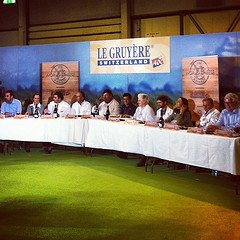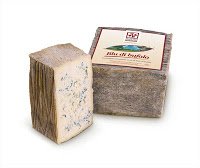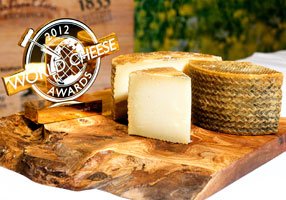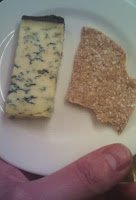You could have cut the tension with (ahem) a cheese wire. A crowd of fromage freaks watched nervously from the sidelines . Bob Farrand, co-organiser of the World
Cheese Awards 2012, suddenly blurted out that he had goosebumps.
For the first time in the awards' history, there was a tie between two cheeses in the battle to be named World Champion. In one corner was a Manchego. In the other a blue buffalo milk cheese from Italy. They were the last two cheeses standing from 2,781 entrants to the annual competition. After guzzling cheese for eight hours, the grand panel of judges had one last crucial decision to make. Which of the two would take the title?
 In the end the Manchego won it by a whisker after a show of hands vote from the judges. Made by a company called Dehesa de los Llanos in Albacete, the Manchego DO Gran Reserva is made with raw milk and matured for at least nine months. It was the first Champion from mainland Spain in the two decades that the awards have been running.
In the end the Manchego won it by a whisker after a show of hands vote from the judges. Made by a company called Dehesa de los Llanos in Albacete, the Manchego DO Gran Reserva is made with raw milk and matured for at least nine months. It was the first Champion from mainland Spain in the two decades that the awards have been running."A stunning cheese - light, with high notes like a choral song and an aromatic, long finish,” is how the judging panel described it. After recovering from his goosebumps, Farrand declared it "an exquisite example of an artisan cheese made with incredible skill".
The blue cheese that oh, so very nearly took the crown was a rich brick-shaped blue called Blu di Bufala (below) from a company called Azienda Agricola Gritti Bruno E Alfio. Hard cheese, you might say.
 In all, 255 judges from around the world took part in the
awards, staged alongside the BBC Good Food Show at the Birmingham NEC.Cheese from 30 countries was entered into the awards with 75% of entries coming from overseas.
In all, 255 judges from around the world took part in the
awards, staged alongside the BBC Good Food Show at the Birmingham NEC.Cheese from 30 countries was entered into the awards with 75% of entries coming from overseas.
Two British cheese made the final shortlist of 16 Super Gold cheeses: Spenwood, a
hard-pressed cheese made from unpasteurised ewe’s milk, matured for six months; and Barkham Blue, a buttery blue made with Guernsey and Jersey milk. There was also a really good showing from the US (see below for the full list).
The top 16 Super Golds at the
World Cheese Awards 2012
Manchego DO
Gran Reserva
Dehesa de los Llanos
S.L.
SPAIN
Blu di Bufala
Azienda Agricola Gritti
Bruno E Alfio S.S.
ITALY
Spenwood Ewes
Village Maid Cheese
ENGLAND
Le Gruyère AOC 1655
Fromage Gruyère
SWITZERLAND
Soignon Chevre de
Caractere produced
by Eurial
Eurilait
FRANCE
Melkbus Boerenkaas
Uniekaas Nederland
THE NETHERLANDS
Harbison
Cellars at Jasper Hill
USA
Stärnächäs Extra
Würzig
Walo von Mühlenen
SWITZERLAND
Le Gruyère AOC
Switzerland
- Cave Aged
Walo von Mühlenen
SWITZERLAND
Rogue River Blue
Rogue Creamery
USA
Comte AOP produced by
Arnaud
QST / Cheese de France
FRANCE
Barkham Blue
Two Hoots Cheese
ENGLAND
Bandage Wrapped Cheddar
Fiscalini Cheese
Company
USA
Sierra de Albarracín -
Blue Label
Queso Artesano de
Teruel
SPAIN
Rotwii Bärgler, Red
Nose
Walo von Mühlenen
SWITZERLAND
Shepsog
Grafton Village Cheese
Co.
USA
The entire list of all the award winners can be downloaded here.




